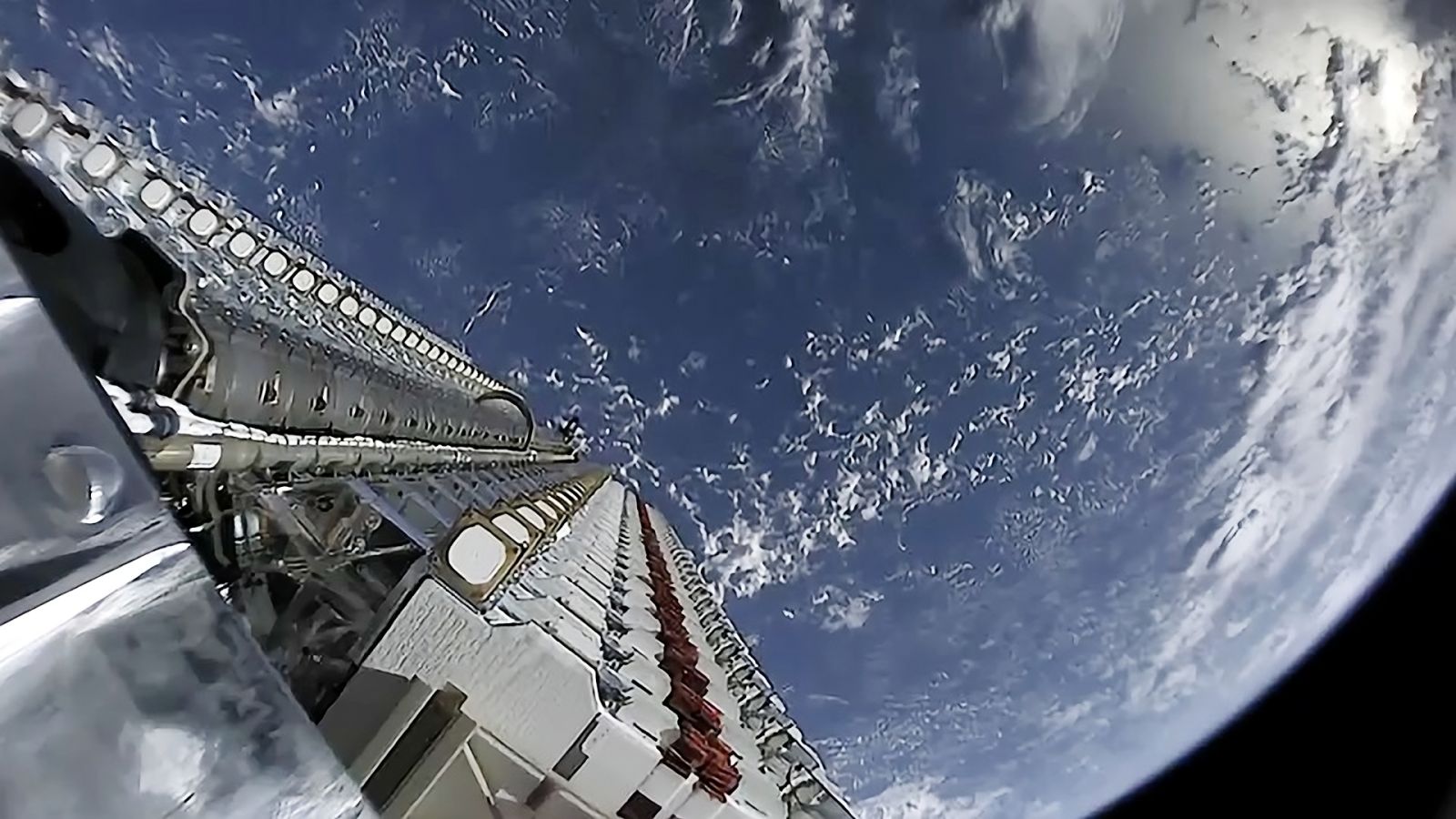Follow us on Google News (click on ☆)

Deployment of Starlink satellites into orbit
A new study, involving scientists from CNRS Terre & Univers (see box), utilizing LOFAR, found that the second-generation "V2 mini" Starlink satellites emit up to 32 times more, and across a wider range of frequencies, than the first-generation satellites. This threatens to blind radio telescopes and could disrupt vital research crucial for our knowledge of the Universe.
The UEMR from Starlink is 10 million times more intense than the faintest sources detectable by LOFAR. They exceed the levels recommended by the International Telecommunication Union in the 150.5 to 153 MHz band allocated to radio astronomy, and even potentially surpass normal electromagnetic compatibility standards used for commercial electronic equipment.
The threat is increasing with Starlink launching 40 V2 mini satellites per week, along with the development of many other low Earth orbit satellite constellations.
LOFAR is the world's largest telescope monitoring at low radio frequencies. It consists of 52 stations, centered in the Netherlands but spread across Europe, including a station at the Nançay Radio Astronomy Observatory (ORN). At ORN, the LOFAR station is complemented by the NenuFAR radio telescope, which confirms LOFAR's observations at low frequencies.
The passage of a Starlink satellite through NenuFAR's field of view. The tabulated position of the satellite is marked by a red circle, along with the positions of other higher-altitude satellites.
© Xiang Zhang, LESIA, Observatoire de Paris-PSL, CNRS
© Xiang Zhang, LESIA, Observatoire de Paris-PSL, CNRS
The animation below shows emissions from a Starlink satellite passing through NenuFAR's field of view. Their power and speed of passage will particularly impact the observation of bursts and fast transient phenomena from various astrophysical sources such as exoplanets, novae, etc.
The authors of the study hope that their measurements will assist operators in identifying the causes of their UEMR.
References:
Bassa et al., Bright unintended electromagnetic radiation from second-generation Starlink satellites, A&A, 689 (2024) L10.
The International LOFAR Telescope becomes an ERIC